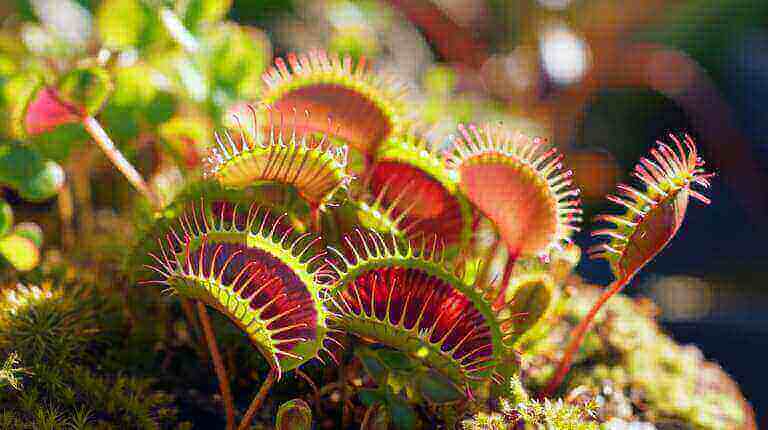Tradescantia, also known as wandering jew, is a popular houseplant with striking leaves in shades of silver, green, or purple. While any spiderwort plant can be grown outside in the right climate, there are species and cultivars that have been specifically bred to be beautiful houseplants. Some of the unique tradescantia varieties include Baby Bunny Bellies, Bilberry Ice, Cobweb, Green Ghost, Lilac, Moses in the Cradle, Nanouk, Purple Heart, Silvery Inch Plant, and Tricolor. Each variety has its own unique foliage colors and growth habits, making them a stunning addition to any indoor or outdoor space.
Key Takeaways:
- Tradescantia varieties offer a wide range of colors and growth habits.
- Baby Bunny Bellies is an indoor type with furry leaves and a trailing growth habit.
- Bilberry Ice is frost-hardy and features large purple, yellow, and white flowers.
- Cobweb adds intrigue to partially shady spots with its web-like leaves.
- Tradescantia varieties are suitable for both indoor and outdoor settings.
Baby Bunny Bellies – A Delight for the Senses
Baby Bunny Bellies, also known as Tradescantia chrysophylla, is an indoor type of tradescantia native to the wet regions of Brazil. This unique tradescantia variety offers a delightful sensory experience with its soft and furry leaves, which are green on top and purple on the underside.
With its trailing growth habit, Baby Bunny Bellies can reach up to two feet in length and about six inches in height, making it perfect for hanging baskets or cascading over the edges of shelves. This variety thrives in bright, indirect light and requires moderate moisture, with the top inch of soil drying out between waterings.
Best suited for USDA growing zones 9-11, Baby Bunny Bellies is a stunning addition to any indoor space. Under optimal conditions, it can even produce tiny purple flowers, adding an extra touch of beauty to its already captivating foliage.
Key Features of Baby Bunny Bellies:
- Indoor type of tradescantia with soft and furry leaves
- Trailing growth habit, reaching up to two feet in length
- Green leaves with purple undersides
- Requires bright, indirect light and moderate moisture
- Suitable for USDA zones 9-11
“Baby Bunny Bellies offers a delightful sensory experience with its soft and furry leaves, making it a unique and captivating addition to any indoor space.”
Whether you’re a fan of tradescantia or simply looking for a new and intriguing houseplant, Baby Bunny Bellies is sure to delight your senses and add a touch of natural beauty to your home.
| Common Name | Scientific Name | Growth Habit | Light Requirements | Watering Needs | USDA Zones |
|---|---|---|---|---|---|
| Baby Bunny Bellies | Tradescantia chrysophylla | Trailing | Bright, indirect light | Moderate moisture | 9-11 |
Bilberry Ice – Frost-Hardy Beauty with Large Purple Flowers
Bilberry Ice, also known as Tradescantia x andersoniana, is a frost-hardy tradescantia variety that adds a stunning pop of color to any garden. With its large purple, yellow, and white flowers, Bilberry Ice is sure to grab attention. This variety is native to North America and can tolerate temperatures as low as 5°F, making it suitable for USDA zones 3-9. Its ability to withstand frost and cold temperatures sets it apart from other tradescantia varieties, making it a reliable choice for gardeners in cooler climates.
Bilberry Ice grows in a mounding form, reaching a height of about 18 inches and spreading up to two feet wide. Its long, strappy green leaves provide a lush backdrop for the vibrant flowers. This tradescantia variety thrives in full direct sun, although it can tolerate partial shade as well. It is a low-maintenance plant that requires moderate moisture and is easy to grow both indoors and outdoors.
To showcase the beauty of Bilberry Ice, consider planting it in a flower bed, container garden, or mixed border. Its brilliant flowers will attract butterflies and other pollinators, adding life and movement to your outdoor space. Whether you’re a seasoned gardener or a beginner, Bilberry Ice is a fantastic choice for adding color and vibrancy to your landscape.
Key Features of Bilberry Ice:
- Frost-hardy tradescantia variety
- Large purple, yellow, and white flowers
- Mounding growth habit, reaching 18 inches in height
- Spreads up to two feet wide
- Tolerates temperatures as low as 5°F
- Suitable for USDA zones 3-9
- Thrives in full direct sun, but can tolerate partial shade
- Low-maintenance and easy to grow
| Common Name | Scientific Name | Hardiness Zones | Flower Color | Growth Habit |
|---|---|---|---|---|
| Bilberry Ice | Tradescantia x andersoniana | 3-9 | Purple, yellow, and white | Mounding |
Cobweb – A Fascinating Addition to Partially Shady Spots
If you’re looking to add a touch of intrigue to your partially shady spots, look no further than Cobweb, also known as Tradescantia sillamontana. This unique tradescantia variety is a fascinating plant that is sure to captivate your attention. Native to the mountainous regions of northeastern Mexico, Cobweb features oval leaves covered in fine hair, resembling delicate spider webs.
With its trailing growth habit, Cobweb beautifully cascades down containers or hangs gracefully from hanging baskets, making it an eye-catching addition to any indoor or outdoor space. It reaches a height of about 18 inches and spreads up to two feet wide, creating a lush and full display. During the summer, Cobweb produces tiny purple flowers near the base of its leaves, adding a pop of color to its already intriguing foliage.
One of the great advantages of Cobweb is its adaptability to different light conditions. It thrives in partially shady spots, making it an excellent choice for areas that receive filtered sunlight or limited direct sunlight. It is important, however, to avoid overwatering this plant. Cobweb prefers moderate moisture, so be sure to allow the top inch of soil to dry out between waterings.
FAQ
Can tradescantia varieties be grown outdoors?
Yes, some tradescantia varieties can be grown outside in the right climate.
Are all tradescantia varieties suitable for indoor growing?
While any spiderwort plant can be grown outside, there are specific tradescantia varieties that have been bred to be beautiful houseplants.
What are some unique tradescantia varieties?
Some unique tradescantia varieties include Baby Bunny Bellies, Bilberry Ice, Cobweb, Green Ghost, Lilac, Moses in the Cradle, Nanouk, Purple Heart, Silvery Inch Plant, and Tricolor.
What is the growth habit of Baby Bunny Bellies?
Baby Bunny Bellies has a trailing growth habit, reaching up to two feet in length and about six inches in height.
What is the hardiness zone for Baby Bunny Bellies?
Baby Bunny Bellies is best suited for USDA growing zones 9-11.
What are the care requirements for Baby Bunny Bellies?
Baby Bunny Bellies requires bright, indirect light and moderate moisture, with the top inch of soil drying out in between waterings. It can produce tiny purple flowers under optimal growing conditions.
What are the special features of Bilberry Ice?
Bilberry Ice is a frost-hardy tradescantia variety with large purple, yellow, and white flowers. It can withstand temperatures down to 5°F and is suitable for USDA zones 3-9.
How does Cobweb add intrigue to partially shady spots?
Cobweb, also known as Tradescantia sillamontana, features oval leaves covered in fine hair, resembling spider webs. It is suitable for USDA growing zones 6-10 and can be grown both indoors and outdoors.
What is the growth habit of Cobweb?
Cobweb has a mounding, trailing growth habit, reaching a height of 18 inches and spreading up to two feet wide.
What are the care requirements for Cobweb?
Cobweb thrives in partially shady spots and should not be overwatered. It can produce tiny purple flowers in the summer near the base of its leaves.







